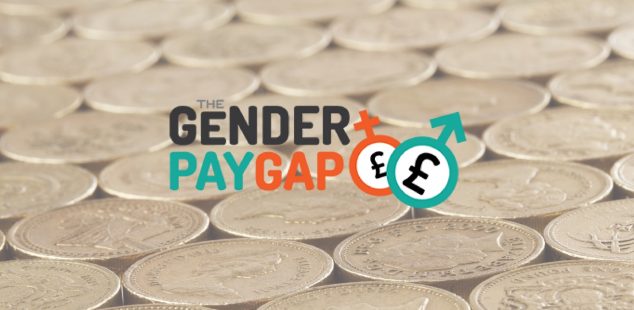Siân Webb from Gapsquare, a tech start-up that uses disruptive technology to analyse, tackle and eliminate the gender pay gap explores in this series unconscious bias and the price we pay for talent.
@gapsquare @SianKWebb
As of April this year, all UK companies with over 250 employees have to annually report on their gender pay gap.
At Gapsquare, we use technology to find out and explain what causes your gender pay gap. There is never one clear cut reason about why a company has a gender pay gap, and is usually caused by several factors, which can essentially be categorised into five causes:
1. Direct discrimination – where women are paid less for doing exactly the same job. However, legislation in the UK (the 1970 Equal Pay Act) makes this illegal and is believed to only contribute a small part to the gender pay gap. However, whilst Equal Pay is different to the gender pay gap, the gender pay gap obligations will bring equal pay issues to the forefront of employees’ minds and represent an opportunity to push for the detail behind the published gender pay data.
2. Segregation in the labour market – Women often work in sectors (for example in health, education, and public administration) where their work is lower valued and lower paid than those dominated by men. Women are also under-represented in managerial and senior positions. For example, women represent only around 17% of board members in the biggest publicly listed companies within the EU, around 4% of chairs of boards, and a third of scientists and engineers across Europe. Researchers at Cornell University found that the difference between occupations and industries in which men and women work has become the largest cause of the gender pay gap, accounting for more than half of it.
3. Traditions and stereotypes – segregation is often closely linked to this. Whilst some will represent personal choices, it starts young (when girls are given dolls to play with, and boys given cars, trucks and dinosaurs) and also therefore subtlety influences the choice of educational paths and professional careers women take.
4. Balancing work and private life – family, care and domestic responsibilities are rarely equally shared. The responsibility of looking after dependent family members is largely down to women, meaning that women often have to leave the labour market – only 65.8% of women with young children in the EU are working, compared to 89.1% of men. Although part-time work is sometimes a personal choice, when women work part-time, it has a negative consequence on their career development.
5. Undervaluing women’s work – This is something I wanted to explore in more detail – and the unconscious bias at play here. Women’s competences are in fact valued in a different way compared to men’s. The importance we allocate to jobs are often influenced by societal factors and this includes job stereotypes as well as individual prejudice.
Research suggests: Work done by women simply isn’t valued as highly.
In essence, jobs requiring similar skills, qualifications or experience tend to be poorly paid and undervalued when they are dominated by women rather than by men. For example, the (mainly female) supermarket cashiers usually earn less than the (mainly male) employees involved in stacking shelves. Decisions about these roles contribute to the unconscious bias at work in how we perceive value and worth.
A quick search on Glassdoor which allows you to look at salaries rates of different jobs shows that a Finance Director (more predominately men) is paid an average of £121k compared to a Human Resources Director (more predominately women) is paid an average of £98k. These structures are less to do with any conscious decision to value one job higher than another. Comparing pay gaps across departments show where companies might need to start evaluating the relative importance of jobs where grading and unequal pay structures have evolved over time.
The median earnings of IT managers (mostly men) are 27% higher than Human Resources managers (mostly women), according to USA’s Bureau of Labour Statistics data. Similarly, in the US but at the lower end of the labour market, janitors (usually men) earn 22% more than maids and house cleaners (usually women).
Further, when women enter an industry or particular field in greater numbers, pay declines for the very same jobs that more men were doing before. Studies show that when women in large numbers became designers, their wages fell 34%, housekeepers their wages fell 21% and biologists, their wages fell 18%. And the reverse was true when a job attracted more men. Computer programming, for instance, used to be a seen as a women’s job. But when men began to outnumber women in this field, the job began paying more and gained prestige.
Whilst tackling some of the other root causes of the gender pay gap are important (for example, tackling job segregation by encouraging more women into STEM [Science, Technology, Engineering and Mathematics] or bringing in better paternity leave or childcare facilities to make it more equitable for men and women to raise children and have caring responsibilities), what companies need to also do is investigate the unconscious bias that may be undervaluing women’s work.
So how do you get started to create a bias free company?
As all companies need to report on their gender pay gap figures, they also need to understand where these numbers come from to be able to make changes and measure progress. Gapsquare’s technology allows you to start collecting and analysing the data to start to understand what forces are at work, so that you can create action plans to remove one of the root causes that causes the gender pay gap so that in turn, you can ultimately narrow it.
These might produce ideas such as:
• Taking the bias out of recruitment practices – structured interviews allows you to score applicants in real time
• The language of recruitment ads – language can unconsciously discourage men and women from applying for certain roles
• Stop using self-evaluations – studies show that managers unconsciously adjust up appraisals which advantages men who tend to be over-confident
By starting to ask questions about how your gender pay gap is composed you can encourage a company to start thinking about what characteristics and components make it a successful company. When equality and diversity thinking starts becoming embedded into employment practices, this will start to ultimately reposition the value women make in the company, and into our economy.
This topic will be discussed in detail at the forthcoming Gender Pay Gap Annual Conference 2017.
Watch Dr Zara Nanu, CEO of Gapsquare discuss strategies for collecting and verifying gender pay gap data and metrics at a recent Fawcett Society event:









